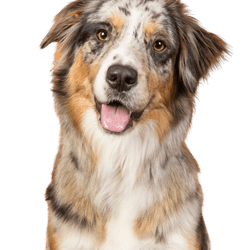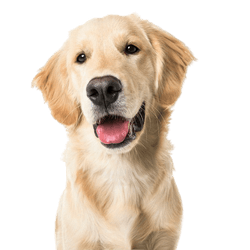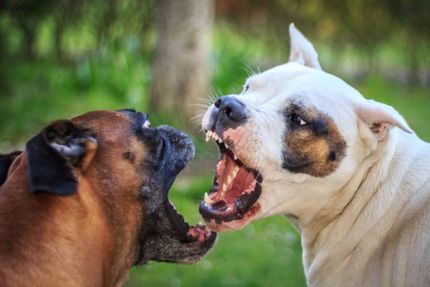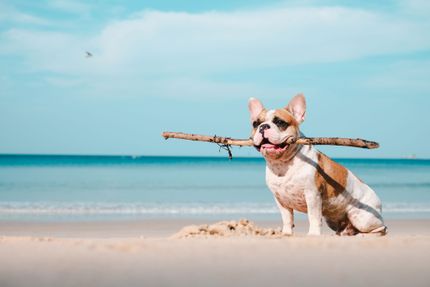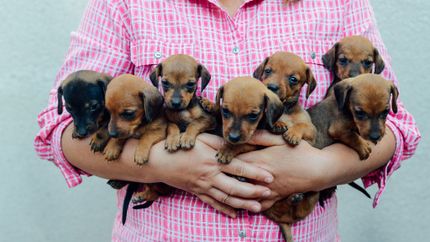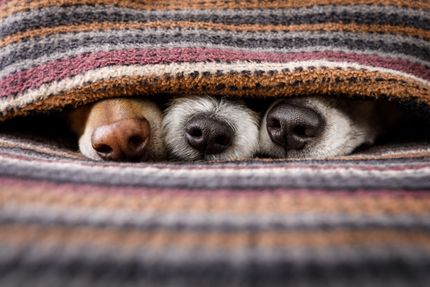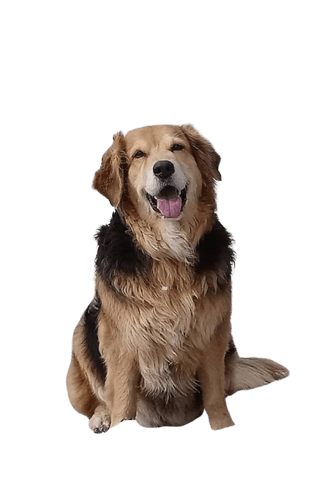
Australian Retriever:Australian Shepherd and Golden Retriever Mix
Facts & Origin
Australian Shepherd and Golden Retriever Mix - a Hybrid Breed
If you're looking for a loyal and loving companion, look no further than the Australian Shepherd and Golden Retriever breed! These dogs are known for their affectionate nature and are great for families.
What are breed characteristics of this mix dog?
The Australian Shepherd Golden Retriever mix has a body weight of 27 kg and a body length of 71 cm. This dog breed has a medium build with a strong, muscular body. The coat is thick and dense, with a wavy or curly texture. The coat is usually golden in color, with dark brown or black markings on the face and legs. The Australian Shepherd Golden Retriever mix is an intelligent, obedient and loyal dog breed.


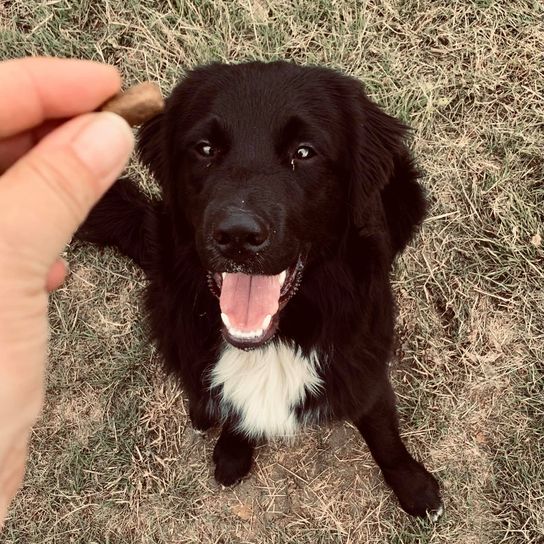
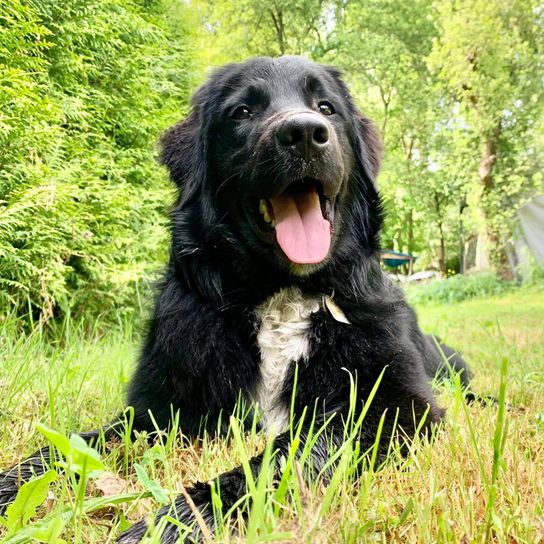
| Alternate Name | - |
| Origin | USA - UK |
| Life expectancy | 10 - 15 years |
| Care requirements | high-maintenance |
| Activity level | high - average |
| FCI group | not recognised |
| AKC group | not recognised |
| KC group | not recognised |
More Australian Shepherd mixes
More Golden Retriever mixes
Attitude, character and temperament of the breed
Possible character traits of Australian Shepherd and Golden Retriever mix - Such is probably his nature.
The Australian Shepherd-Golden Retriever mix is a popular cross between two intelligent and versatile breeds. The Australian Shepherd is known for its herding and working qualities, while the Golden Retriever is a popular family pet known for its loyalty and trainability.
The Aussie-Golden mix is a versatile breed that can excel in many different areas. They are often used as service dogs and therapy dogs and make excellent family pets. They are intelligent and eager to learn, making them easy to train. They are also devoted and loyal to their family, which makes them great companions.
While the Aussie-Golden mix makes a great pet for almost any family, they are not suitable for everyone. They need plenty of exercise and mental stimulation, and if left alone too often, they can become bored and destructive. They also need frequent brushing and grooming and are not a good choice for families with allergies.
If you are looking for a versatile and intelligent dog that will be a loyal companion, the Australian Shepherd- Golden Retriever mix may be the breed for you.
Character
Usage
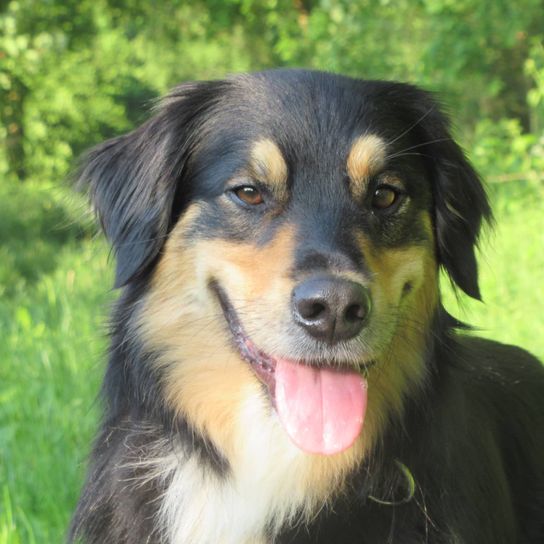
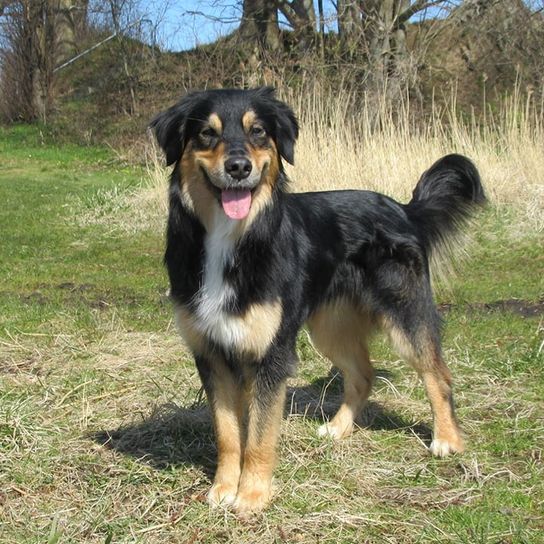
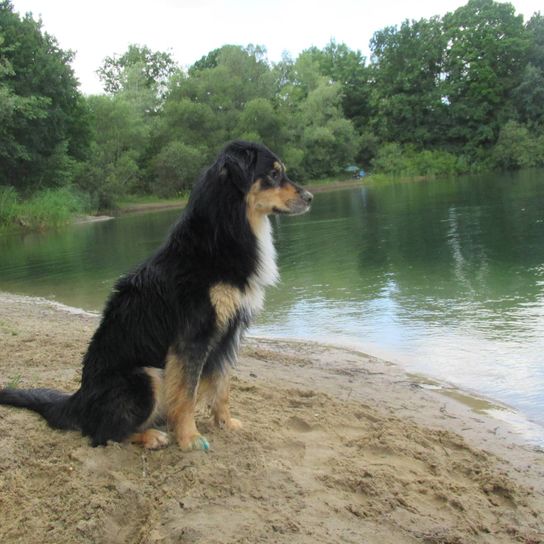
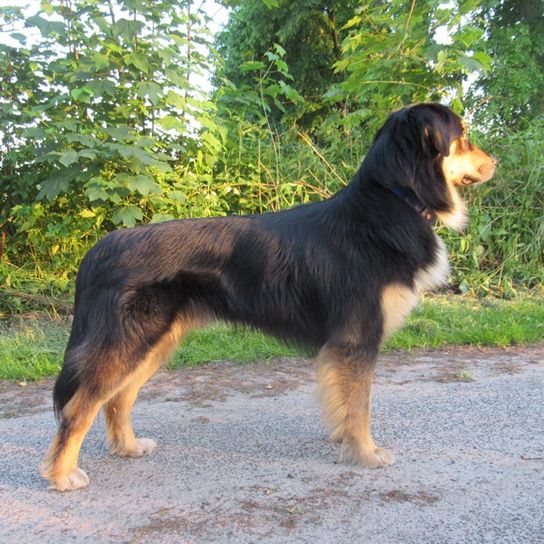


Health and breeding information
What diseases can occur in Australian Shepherd and Golden Retriever mix.
There are a number of known diseases that can affect Australian Shepherd-Golden Retriever mixes. These include hip and elbow dysplasia, eye problems such as progressive retinal atrophy and cataracts, and various cancers. Although many of these conditions can be effectively treated, they can all affect the dog's quality of life.
Hip and elbow dysplasia are among the most common problems that occur in dogs of the Australian Shepherd Golden Retriever breed. Both conditions are hereditary, meaning they are passed from parents to puppies. Hip dysplasia occurs when the hip joint does not develop properly, which can lead to pain, lameness and eventually arthritis. Elbow dysplasia is a similar condition that affects the elbow joint.
Eye problems are also relatively common in dogs of the Australian Shepherd Golden Retriever breed. Progressive retinal atrophy is a degenerative disease that leads to blindness. It is caused by the gradual deterioration of the retina, the light-sensitive layer of tissue at the back of the eye. Early diagnosis and treatment is important to prevent complete blindness. Cataracts are another type of eye problem that can occur in this breed. These are opaque areas in the lens of the eye that can cause vision problems. Surgery is usually required to remove the cataracts.
Cancer is another problem in dogs of the Australian Shepherd Golden Retriever mix breed. Unfortunately, this is a very real possibility, as cancer is the leading cause of death in dogs. This breed can be affected by several types of cancer, including lymphoma, bone cancer, and skin cancer. While there is no sure way to prevent cancer, early detection is crucial. Regular veterinary exams and screening can help detect cancer in its early stages, when it is still most treatable.
Although the Australian Shepherd Golden Retriever mix is generally a healthy breed, there are a number of diseases that can affect it. Fortunately, many of these diseases can be effectively treated if diagnosed and treated early.


What does this mixed breed look like?
The Australian Shepherd Golden Retriever mix has a coat that is a mixture of the two parent breeds. The coat is usually light gold in color, but can also be red or cream. The coat is thick and dense and sheds moderately throughout the year.
| Fur length | long - medium |
| Fur | flat coated - wavy |
| Ear shape | Standing Ears - Triangle |
| Tail | fanned out |
| Anatomy | sporty, strong |
| Size ♀ | 46 - 56 cm |
| Weight ♀ | 25 - 32 kg |
| Size ♂ | 51 - 61 cm |
| Weight ♂ | 28 - 34 kg |
| Suitable For | - |
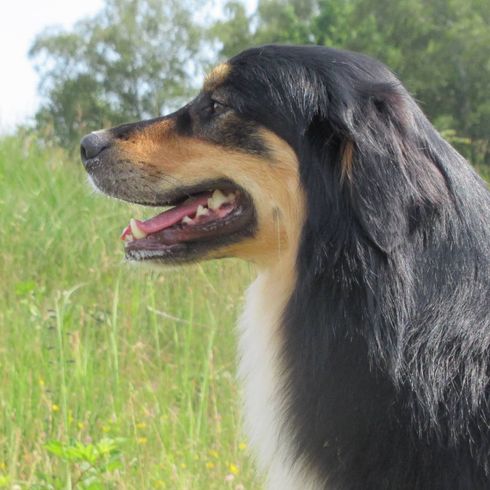
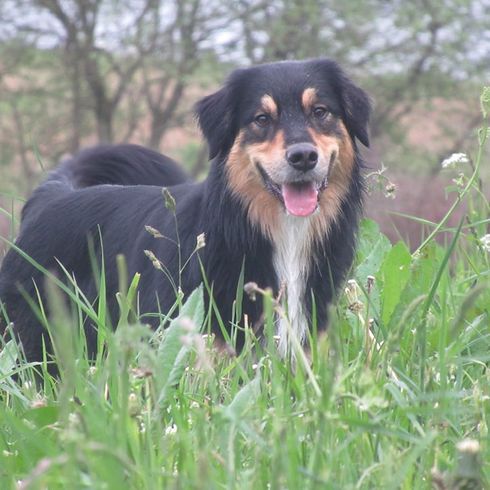
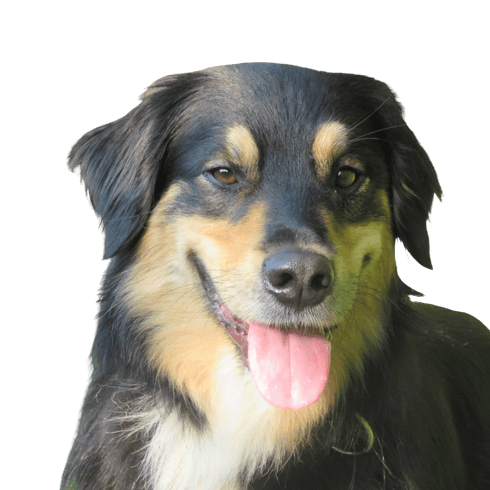
Known Diseases
Elbow dysplasia (ED)
Elbow joint dysplasia is a chronic disease complex of the elbow joint of fast growing dog breeds.
Hip dysplasia (HD)
The hip dysplasia or hip joint dysplasia of the dog (HD) is a maldevelopment of the hip joint.
MDR1 defect
The MDR1 defect is a defect in the MDR1 gene that can occur in some breeds of dogs and in humans. This results in the deficient or absent synthesis of a certain protein which is an important component of the blood-brain barrier, leading to hypersensitivity to some drugs.
Progressive Retinal Atrophy (PRA)
Progressive retinal atrophy (PRA) is a slowly progressive death of the retina in dogs.
Numbness
Often occurs in old age.
Epilepsy
Definition: Dog has epilepsy if, for example, at least two epileptic seizures occur more than 24 hours apart.
Cataract
Cataracts are still one of the most common causes of blindness, even in dogs.
FAQ
-
Australian Shepherds and Golden Retrievers go well together because they are both intelligent, energetic and loyal breeds. They make great family pets and get along well with children.
-
Australian Shepherds and Golden Retrievers are both intelligent, energetic and loyal breeds, so their mixed breeds usually inherit the same traits. They are great family dogs and get along well with children.
-
Australian Shepherds and Golden Retrievers are both energetic breeds, so their mixed breeds will likely need plenty of exercise. Long walks, runs or hikes are a great way to keep them happy and healthy.
-
Australian Shepherds and Golden Retrievers are both high-maintenance breeds when it comes to coat care. Their mixed breeds will likely need daily brushing to prevent matting and tangles in their coats.
-
Australian Shepherds and Golden Retrievers are both relatively healthy breeds, but their mixed breeds can be prone to some health problems. Hip and elbow dysplasia, cancer, and allergies are some of the most common health problems in these mixed breeds.
Useful Articles
You can find articles that might interest you in the dogbible blog to match your favorite breed.
Visit our magazineto stay up to date on dog trends.
To find out more, view our Privacy Policy
Find here the breed that suits you and find out what character traits it has. Here you can also learn more about the origin, size and weight of your favorite breeds.
Matching your favorite breed, you'll find articles that might interest you on the dogbible dog blog.
Shortening the claws of a dog - this is what you have to pay attention to
Roller skating or skateboarding with the dog
Recognize abdominal pain in dogs
Silver Labrador - buying, breeders and information
Leaving the dog alone in the garden - advantages/disadvantages
